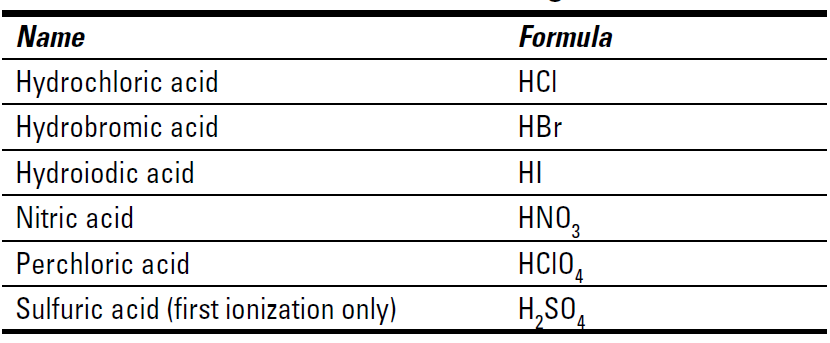
Hydrogen chloride and other strong acids
 المؤلف:
John T. Moore, EdD
المؤلف:
John T. Moore, EdD
 المصدر:
Chemistry Essentials For Dummies
المصدر:
Chemistry Essentials For Dummies
 الجزء والصفحة:
p 147
الجزء والصفحة:
p 147
 26-1-2017
26-1-2017
 2199
2199
Hydrogen chloride and other strong acids
If you dissolve hydrogen chloride gas in water, the HCl reacts with the water molecules and donates a proton to them:
HCl(g) + H2O(l) → Cl– + H3O+
The H3O+ ion is called the hydronium ion. This reaction goes essentially to completion. In this case, all the HCl ionizes to H3O+ and Cl– until there’s no more HCl present. Because HCl ionizes essentially 100 percent in water, it’s considered a strong acid. Note that water, in this case, acts as a base, accepting the proton from the hydrogen chloride.
Calculating ion concentration in solutions Because strong acids ionize completely, calculating the concentration of the ions in solution is easy if you know the initial concentration of the strong acid. For example, suppose that you bubble 0.1 moles of HCl gas into a liter of water.
You can say that the initial concentration of HCl is 0.1 M (0.1 mol/L). M stands for molarity, and mol/L stands for moles of solute per liter. You can represent this 0.1 M concentration for the HCl in this fashion: [HCl] = 0.1. Here, the brackets around the compound indicate molar concentration, or mol/L. Because the HCl completely ionizes, you see from the balanced equation that for every HCl that ionizes, you get one hydronium ion and one chloride ion. So the concentration of ions in that 0.1 M HCl solution is
[H3O+] = 0.1, and [Cl–] = 0.1
The relationship between the amount of acid you start with and the amount of acid or base ions you end up with is valuable when you calculate the pH of a solution. Looking at common strong acids in Table 1-1 lists the most common strong acids you’re likely to encounter. Most of the other acids you encounter are weak.
Table 1-1 Common Strong Acids

Sulfuric acid is called a diprotic acid. It can donate two protons, but only the first ionization goes 100 percent. The other acids listed in Table 1-1 are monoprotic acids, because they donate only one proton.
 الاكثر قراءة في مقالات متنوعة في علم الكيمياء
الاكثر قراءة في مقالات متنوعة في علم الكيمياء
 اخر الاخبار
اخر الاخبار
اخبار العتبة العباسية المقدسة


